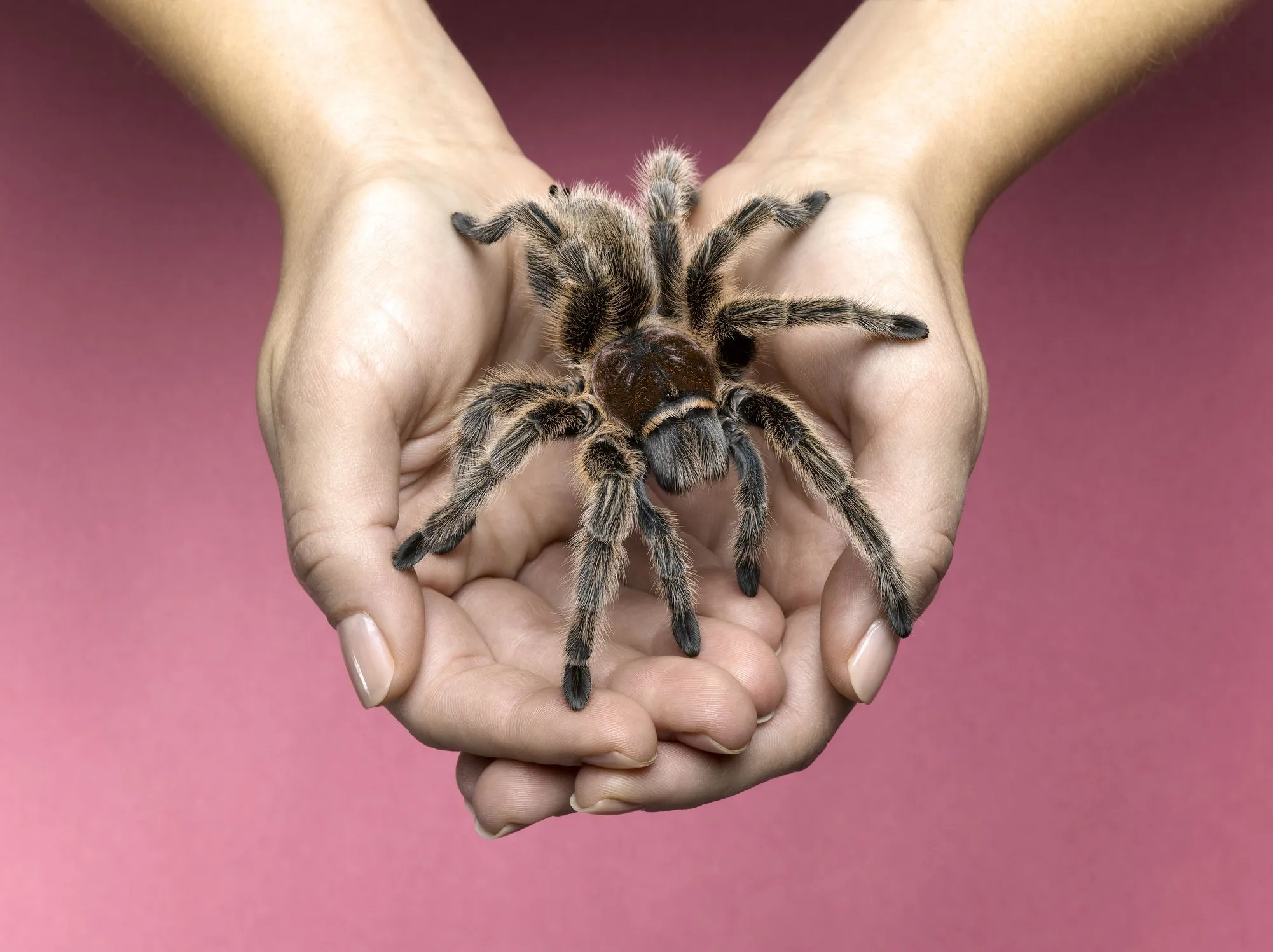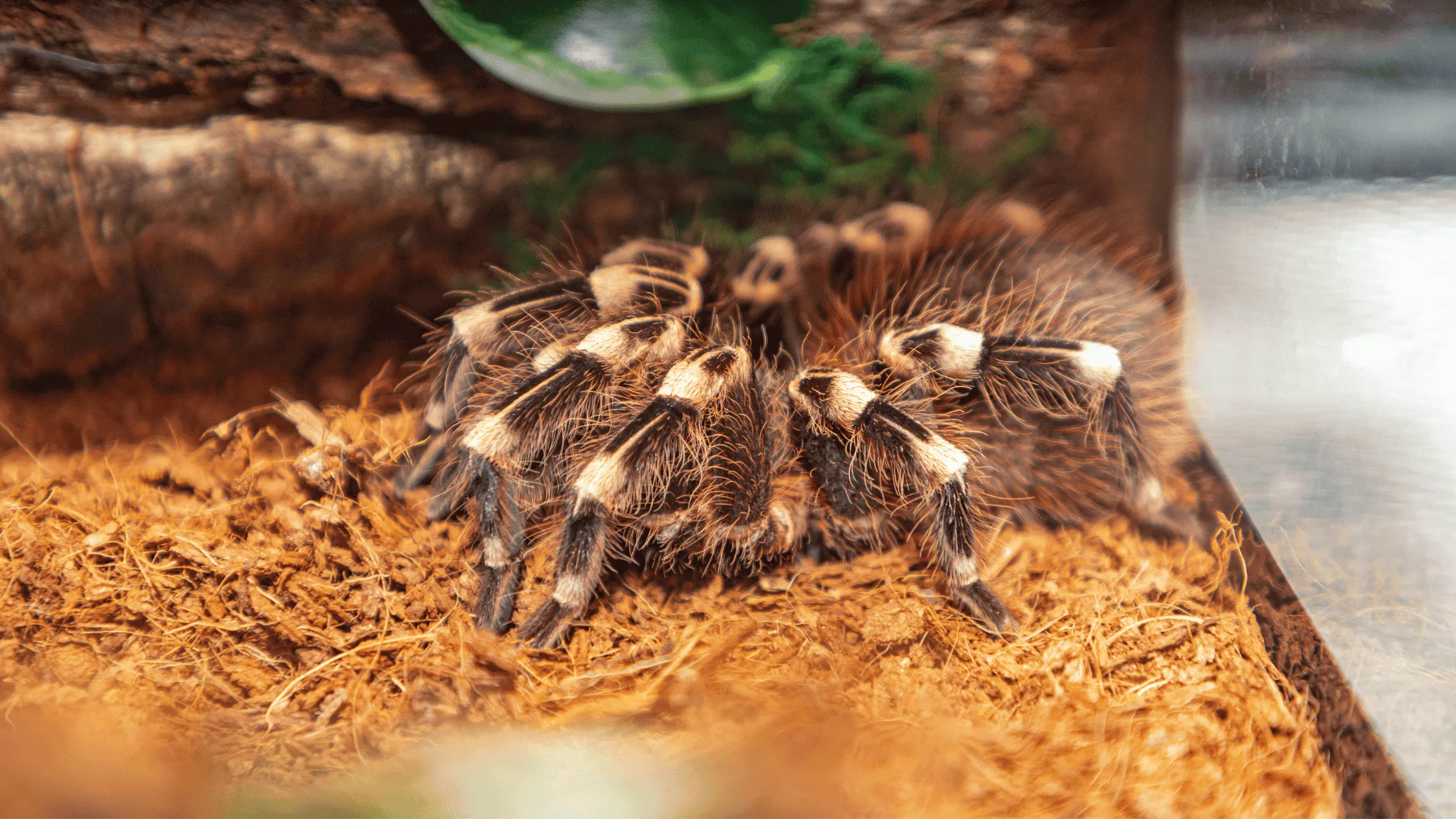What are Tarantulas?
Tarantulas are large, hairy spiders belonging to the Theraphosidae family. They are known for their impressive size, with some species having leg spans exceeding 10 inches. These fascinating creatures are found in various habitats worldwide, including tropical rainforests, deserts, and grasslands. Tarantulas are generally nocturnal hunters, feeding on insects, small reptiles, and even rodents. Their longevity and relatively docile nature make them popular pets, but prospective owners should be aware of their specific needs and responsibilities. Tarantulas are diverse, with hundreds of different species, each with unique characteristics, colors, and behaviors. Their appeal lies in their unique appearance, fascinating behavior, and relatively low maintenance compared to other exotic pets, making them a captivating choice for experienced and novice pet owners alike.
Tarantula Species for Beginners
Selecting the right tarantula species is crucial for beginner keepers. Some species are more docile, easier to care for, and less prone to defensive behaviors. When choosing a tarantula as a pet, it’s essential to research its temperament, growth rate, and specific care requirements. Consider your experience level and commitment before acquiring a tarantula. Generally, New World tarantulas, like the Chilean rose hair or the Pinktoe tarantula, are recommended for beginners due to their relatively calm nature and tolerance of handling. Old World tarantulas tend to be more defensive and venomous, making them less suitable for novices. Proper research ensures a positive experience for both the tarantula and the owner, promoting a successful and enjoyable journey into the world of tarantula keeping.
Popular Tarantula Species

Several tarantula species are popular choices for beginners due to their temperament and manageable care requirements. The Chilean rose hair (Grammostola rosea) is a well-known and docile species, known for its hardiness and tolerance of handling. The Pinktoe tarantula (Avicularia avicularia) is another excellent option, appreciated for its vibrant colors and arboreal lifestyle. The Mexican red knee (Brachypelma hamorii) is a beautiful and relatively calm species, becoming a favorite among hobbyists. These species are typically more forgiving of beginner mistakes and have a less aggressive temperament. They are also generally available and relatively affordable, making them accessible for novice owners. Researching each species’ specific needs, such as humidity, temperature, and enclosure size, will help ensure a healthy and happy tarantula.
Caring for Your Tarantula
Caring for a tarantula involves providing a suitable environment that mimics its natural habitat and ensuring its health and well-being. This includes proper housing, feeding, and regular maintenance. Tarantulas have specific needs regarding temperature, humidity, and substrate, which need to be carefully monitored and adjusted as needed. Regular cleaning of the enclosure and providing fresh water are also essential. Understanding the specific requirements of your tarantula species will help you create an environment where it can thrive. Proper care promotes a long and healthy life for your pet. Researching your chosen species, observing its behavior, and paying attention to subtle changes in its environment are key to becoming a successful tarantula owner. This level of care will lead to a rewarding experience.
Creating the Perfect Tarantula Habitat
Creating the perfect habitat for a tarantula is crucial for its health and happiness. The enclosure should be appropriately sized, secure, and provide the right environmental conditions. The size of the enclosure depends on the tarantula’s size and species. For terrestrial species, a horizontal enclosure is best, while arboreal species require a taller one. Maintaining the correct temperature and humidity levels is also essential, which can be achieved with heat lamps, misting, and appropriate substrate. The enclosure should also provide enrichment, such as hiding places, climbing structures, and water dishes. Regularly cleaning the enclosure and removing any uneaten food will also maintain a healthy environment. Creating the perfect habitat involves careful planning and ongoing maintenance to ensure the tarantula’s well-being.
Choosing the Right Enclosure

Choosing the right enclosure is a critical first step in tarantula care. The enclosure’s size should be appropriate for the tarantula’s size and species, allowing room for movement and activities. The enclosure must be secure, with a tight-fitting lid to prevent escape. Ventilation is crucial for air circulation, but it should not compromise humidity levels. The enclosure should be made of a material that is easy to clean and maintain, such as glass or acrylic. Some species, particularly arboreal tarantulas, benefit from vertical enclosures that allow for climbing. The choice of enclosure directly affects the tarantula’s health and well-being, and selecting the right one is a fundamental part of responsible pet ownership. Before purchasing, always research the specific requirements of your chosen tarantula species.
Substrate and Decorations
The substrate and decorations inside a tarantula enclosure serve important purposes in providing a comfortable and stimulating environment. The substrate should be absorbent, allowing it to retain moisture and maintain humidity levels, which is crucial for many species. Popular substrate choices include coconut fiber, peat moss, and vermiculite. Decorations such as cork bark, branches, and artificial plants provide hiding places and climbing opportunities, which enrich the tarantula’s environment. The substrate depth should be appropriate for the tarantula’s species and burrowing behavior. Decorations should also be securely placed to prevent the tarantula from getting injured or trapped. The right combination of substrate and decorations creates a naturalistic environment that promotes the tarantula’s physical and psychological well-being. Regularly maintain and replace the substrate to prevent the growth of mold and bacteria.
Feeding Your Tarantula
Feeding your tarantula is a simple process, but it requires understanding your pet’s dietary needs. Tarantulas are carnivores and primarily eat insects, such as crickets, mealworms, and roaches. The size of the prey should be appropriate for the tarantula’s size, generally no larger than the tarantula’s body. It’s important to provide a varied diet to ensure nutritional balance. Avoid feeding tarantulas prey that may have been exposed to pesticides or chemicals. Proper feeding contributes to the overall health and vitality of your tarantula. Always remove any uneaten prey after 24 hours to prevent stress on the tarantula. Understanding the feeding habits and preferences of your specific tarantula species ensures optimal health and growth.
What do Tarantulas Eat?

Tarantulas are insectivores and their diet primarily consists of insects. The staple diet for many tarantula owners includes crickets, mealworms, and roaches. The nutritional value of the prey is important; therefore, it’s best to feed the insects with a nutritious diet before offering them to your tarantula. Other options include freshly molted insects, which are softer and easier to digest. Avoid wild-caught insects, as they may carry parasites or pesticides. Occasionally, larger tarantulas can be offered small vertebrates such as pinkie mice, although this is not a regular part of their diet. The choice of prey should be varied to provide a balanced diet. Providing a diverse diet will help ensure that your tarantula receives essential nutrients for growth and development. Always research your tarantula species’ preferred diet to guarantee their well-being.
Feeding Frequency
The feeding frequency for tarantulas depends on their age, size, and metabolism. Spiderlings and juvenile tarantulas generally need to be fed more frequently, typically 2-3 times per week. Adult tarantulas can be fed less often, usually once or twice a week, or even less during their premolt phase. Overfeeding should be avoided, as it can lead to health problems. Observe your tarantula’s behavior and appetite; a tarantula that is not hungry may refuse to eat. Always remove any uneaten prey after 24 hours. Adjust the feeding schedule based on the species and its growth stage, as well as the individual tarantula’s appetite. Be patient and observant; a healthy tarantula will have a good appetite when ready to eat. Regular monitoring of your tarantula’s abdomen for fullness can also help guide your feeding schedule.
Tarantula Health and Safety
Ensuring the health and safety of your tarantula involves a combination of proper care, regular observation, and safe handling practices. Providing a clean and appropriately maintained environment is crucial to preventing diseases and infections. Observe your tarantula regularly for signs of illness, such as loss of appetite, lethargy, or unusual behavior. Proper handling techniques are also essential to prevent both the tarantula and the handler from harm. Tarantulas can be defensive and may bite or flick urticating hairs if threatened. Creating a safe environment protects your tarantula from injury, disease, and stress, leading to a long and fulfilling life. Educate yourself about your species’ specific behaviors and potential risks. Handle with care, observe regularly, and prioritize the tarantula’s well-being.
Identifying Common Health Issues

Identifying common health issues in tarantulas requires careful observation and knowledge of their normal behavior. Common health issues include parasites, bacterial infections, and injuries. Loss of appetite, lethargy, and unusual behavior are all signs that something is wrong. Examine the tarantula’s abdomen for signs of swelling or discoloration, which may indicate a problem. Watch for signs of mites or other external parasites. If you suspect a health issue, isolate the tarantula and consult a veterinarian experienced with exotic animals. Early detection and treatment are critical for ensuring your tarantula’s survival. Regular health checks, a clean enclosure, and a balanced diet can help prevent many health problems. Learn the signs of illness specific to your tarantula species and act quickly if you notice anything unusual.
Handling Your Tarantula Safely
Handling your tarantula safely is crucial for both your well-being and the tarantula’s. Handling should only be done when necessary, such as for cleaning or health checks. Approach the tarantula slowly and gently, and avoid sudden movements or loud noises. Use a soft brush or your hands to gently coax the tarantula onto your hand. Avoid holding the tarantula too high, as a fall can injure it. Always wash your hands thoroughly before and after handling a tarantula. Some tarantula species have urticating hairs, which can cause skin irritation. If your tarantula is agitated, it is best to leave it alone. Proper handling prevents injuries to both the handler and the tarantula. Always be respectful of the tarantula’s space and boundaries and do not handle the tarantula if it is not in the mood.
Tarantula as Pets Final Thoughts
Keeping a tarantula as a pet can be a rewarding experience for those willing to provide the proper care and commitment. These fascinating creatures offer a unique opportunity to observe and appreciate the wonders of nature. Responsible tarantula ownership requires thorough research, a suitable environment, and a willingness to learn and adapt. By providing the right habitat, food, and care, you can ensure your tarantula’s well-being and enjoy the beauty and mystery of these remarkable arachnids. Enjoy the experience, and always prioritize the health and happiness of your tarantula. Remember to handle your tarantula with care and observe its behavior carefully, as this will ensure a fulfilling experience for both you and your pet.
